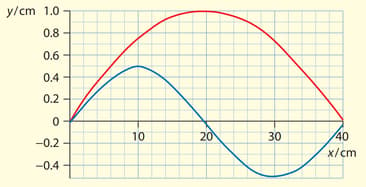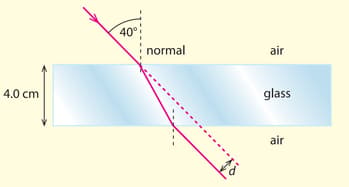MEDIUM
Diploma
IMPORTANT
Earn 100
The wave pulses shown in the diagram travel at and both have width . The heights are indicated on the diagram. In each case, draw the shape of the resulting pulse according to the principle of superposition at times , and . Take to be the time when the pulses are about to meet each other.



Important Questions on Waves
HARD
Diploma
IMPORTANT
Two waves are simultaneously generated on a string. The graph shows the variation of displacement with distance . Draw the actual shape of the string.

EASY
Diploma
IMPORTANT
EASY
Diploma
IMPORTANT
MEDIUM
Diploma
IMPORTANT
MEDIUM
Diploma
IMPORTANT
MEDIUM
Diploma
IMPORTANT
MEDIUM
Diploma
IMPORTANT
A ray of light is incident on a rectangular block of glass of refractive index at an angle of , as shown in the diagram. The thickness of the block is . Calculate the amount by which the ray is deviated.

MEDIUM
Diploma
IMPORTANT
